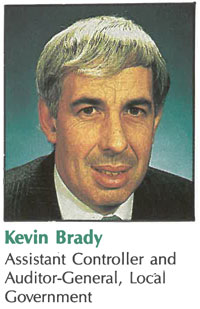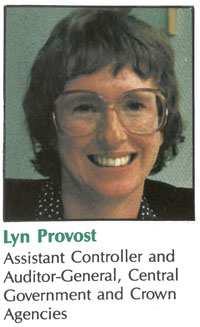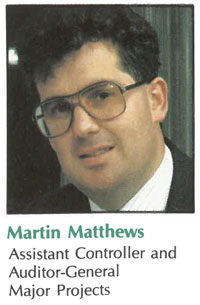Keeping the accountability fires burning
My wife and I were on honeymoon in the United States during the presidential election. We were fascinated to observe the end of one presidency and the start of another.
Here at the Office of the Auditor-General, we have had our own transition. Instead of a presidential election, our new Auditor-General was chosen by Parliament, and appointed by the Governor-General. At midnight on Tuesday 31 January, Lyn Provost’s term as Auditor-General ended. On 1 February 2017, Martin Matthews began his seven-year term as New Zealand’s new Controller and Auditor-General (CAG for short).
With a name like Charles Fitzgerald, I have a lot to live up to. The first Auditor-General was Charles Knight. He served from 1846 till 1878. The second Auditor-General was James Edward Fitzgerald, who served from 1878 to 1896. New Zealand had 17 men serve as Auditor-General, before Lyn Provost became the first woman to hold the position in 2009. Before the Public Audit Act 2001, terms varied. Under the Act, an Auditor-General now serves a single seven-year term.
Thanks to a wide enough range of ages, the three most recent Auditors-General were colleagues together. Kevin Brady, Lyn Provost, and Martin Matthews were on the same leadership team when Brian Tyler was the Auditor-General (1983-1992). As part of settling in and thanking Lyn for her service, Martin had them around to share a meal and some memories.



Much like any other transition of power and responsibility, the handover to Martin on Wednesday was seamless and efficient. In the months after Martin’s appointment was confirmed, he met with Lyn to discuss matters of the Office. A 90-day schedule began as soon as he started his first working day at 8am on 1 February. Unlike recent news events, the start of a new Auditor-General’s term in New Zealand was never likely to be met with protest or fanfare.
That suits the nature of the Office of the Auditor-General. The Auditor-General’s office is one of calm and dignified work. The role, as an Officer of Parliament, is wholly independent, where integrity and trust is paramount. The Auditor-General is independent of executive government and Parliament. Nobody can tell them what to do or how to do it – but they’re accountable to Parliament and, of course, the public, as the Office serves both.
For Martin, becoming the Auditor-General is a bit like “returning home” after 18 years away. He started his career in the Office and left in 1998 as an Assistant Auditor-General. Since then, he has been Chief Executive of the Ministry for Culture and Heritage, and Secretary for Transport.
Martin is currently travelling around New Zealand to meet his staff, from Dunedin to Auckland. After 36 years in the public sector, chances are Martin is familiar with all of the acronyms that we use – CRIs, CCTOs, CCOs, CEs – he’s the CAG, after all. He’ll know his AG-4 (Auditing standards for the audit of service performance reports) from his “Biscotti” (Briefing to the incoming select committee on transport themes and issues – it goes well with coffee, too).
Martin won’t just be publishing reports to Parliament and carrying out thousands of audits (financial auditing, performance auditing, and auditing long-term plans). He’ll be:
- carrying out inquiries;
- encouraging good governance and sharing audit committee resources;
- overseeing the Members' Interests Act;
- providing advice to government bodies and other agencies;
- supporting better service performance information; and
- continuing our international work.
With about 3,700 public entities to audit, Martin will be in the thick of it quite quickly. But he is surrounded by a passionate team of 367 people, including myself, throughout the country who firmly believe in the Office’s vision of improving the performance of, and the public’s trust in, the public sector.
In that respect, 1 February 2017 was business as usual.
